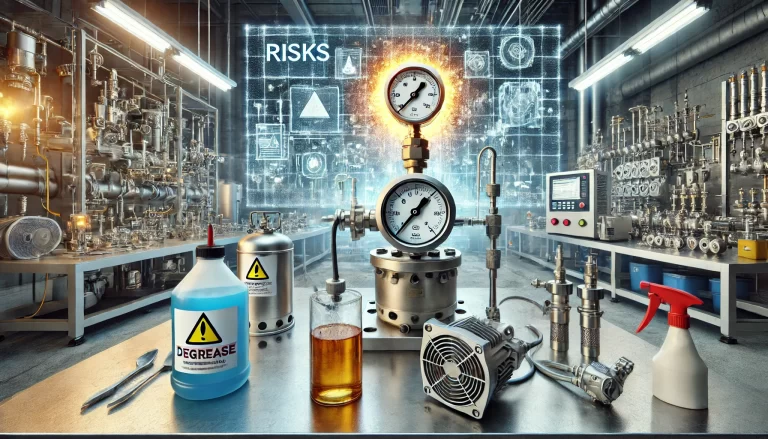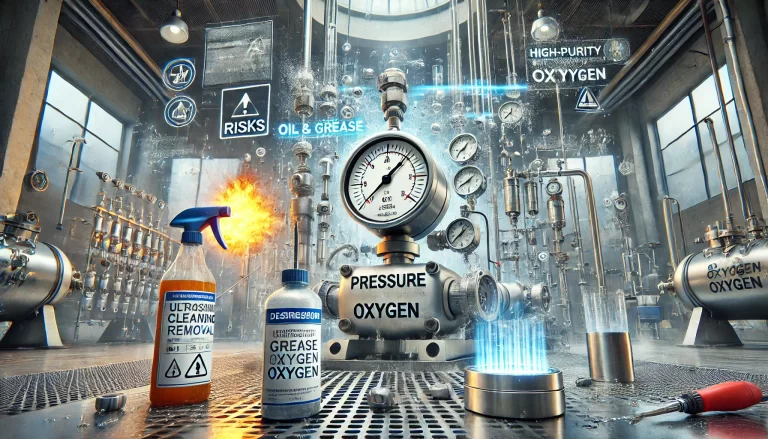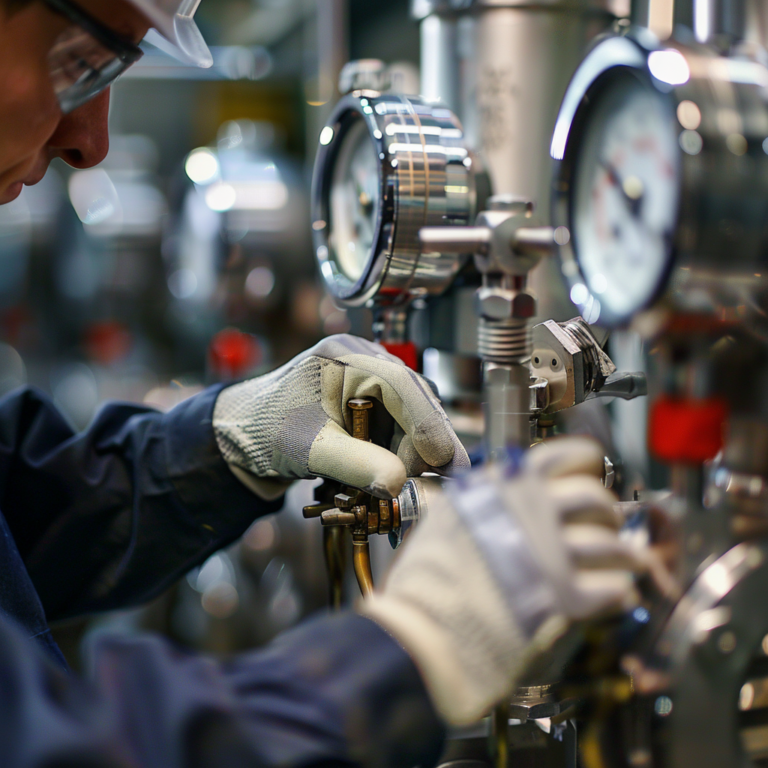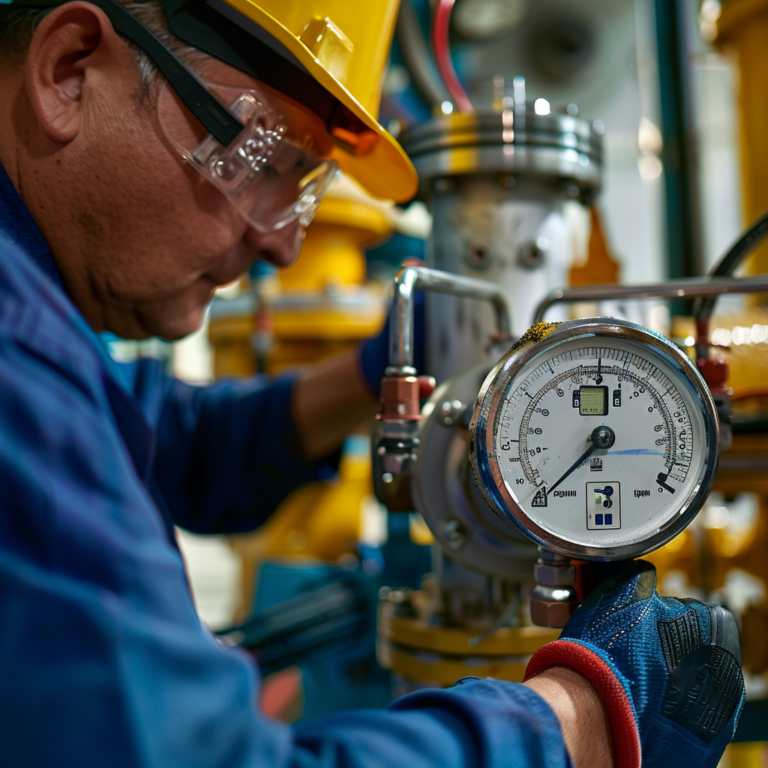Pressure transmitters used in oxygen measurement often require oil and grease removal to ensure safety and reliability. This necessity arises from the inherent risks associated with oxygen’s properties, particularly its potential to react with organic substances like oil and grease. Below is a detailed explanation of the reasons for this treatment, the methods employed, and the scenarios where it is applicable.
1. Understanding Oxygen’s Properties and Associated Risks
1.1 Oxygen as a Strong Oxidizing Agent
Reactivity with Oil and Grease: Oxygen is a powerful oxidizer that can react rapidly with oils and organic substances. Such reactions can release significant heat, potentially leading to localized high temperatures.
Fire and Explosion Risk: In some cases, these reactions may escalate into fires or explosions, especially in environments with high oxygen concentrations or pressures.
1.2 Elevated Risks in Pressurized Environments
Enhanced Oxidation Activity: Under high-pressure conditions, oxygen’s reactivity increases exponentially, heightening the likelihood of hazardous reactions with contaminants like grease.
Catalytic Effects of Particulate Matter: Solid contaminants, such as rust or dust particles, can act as catalysts, further amplifying the risks of spontaneous reactions.

2. Objectives of Oil and Grease Removal
2.1 Prevention of Oxidation Reactions
Removing oil and grease ensures that oxygen does not encounter combustible substances, thereby eliminating the primary cause of dangerous reactions.
2.2 Enhancing Measurement Safety
Clean surfaces within pressure transmitters reduce the risk of accidental ignition, significantly improving operational safety and reliability.
2.3 Ensuring Measurement Accuracy
Residual grease can attract particulate matter or cause blockages in the transmitter’s flow channels, leading to inaccurate readings or equipment malfunction.
3. Methods for Oil and Grease Removal
3.1 Chemical Cleaning
Process: Specialized degreasers like trichloroethylene, isopropyl alcohol, or proprietary cleaning agents are applied to dissolve and remove oil and grease.
Advantages: Highly effective for breaking down stubborn organic residues.
Use Cases: Suitable for small components or areas with heavy contamination.
3.2 Ultrasonic Cleaning
Process: Components are submerged in a liquid cleaning agent and subjected to ultrasonic vibrations, which dislodge contaminants.
Advantages: Ensures thorough cleaning, even in hard-to-reach areas.
Use Cases: Ideal for intricate parts with complex geometries.
3.3 High-Temperature Drying
Process: Post-cleaning, components are baked in high-temperature ovens to evaporate any residual cleaning agents or moisture.
Advantages: Ensures a completely dry and contamination-free surface.
Use Cases: Commonly employed as the final step in the cleaning process.
3.4 Validation and Testing
UV Inspection: Ultraviolet light can reveal residual oil.
Residual Oil Test Paper: Specialized paper detects trace amounts of grease.
Oxygen Exposure Tests: Simulates operating conditions to confirm safety.

4. Scenarios Requiring Oil and Grease Removal
4.1 High-Purity or High-Concentration Oxygen
Risk: Pure oxygen (>99% purity) or high-concentration oxygen environments exhibit significantly heightened reactivity.
Examples: Industrial gas production, medical-grade oxygen systems.
4.2 High-Pressure Systems
Risk: Oxygen at pressures exceeding 1 MPa dramatically increases oxidation risks.
Examples: Pressurized oxygen cylinders, aerospace applications.
4.3 Medical and Aerospace Applications
Risk: These fields demand stringent safety measures due to the potential consequences of system failures.
Examples: Respiratory devices, spacecraft oxygen systems.
4.4 High-Temperature Environments
Risk: Elevated temperatures (>60°C) accelerate oxygen’s reactivity.
Examples: Industrial processes, hot climate operations.
4.5 Presence of Sensitive Components
Risk: High-precision components, such as valves or coated materials, are particularly vulnerable to contamination-induced failures.
Examples: Scientific instruments, high-accuracy metrology systems.

5. Scenarios Where Removal May Not Be Necessary
5.1 Air Instead of Pure Oxygen
Reason: Ambient air contains only ~21% oxygen, significantly reducing oxidation risks.
Examples: Standard HVAC systems, non-critical industrial applications.
5.2 Low-Pressure and Low-Temperature Systems
Reason: Systems operating at low pressures (<1 MPa) and temperatures exhibit minimal risk of spontaneous reactions.
Examples: Routine laboratory setups.
5.3 Low-Sensitivity Applications
Reason: In non-critical applications, minor contamination may not compromise system performance.
Examples: Basic monitoring or non-industrial environments.
6. Case Study: Avoidable Accidents Highlighting the Need for Oil and Grease Removal
Example 1: Industrial Gas Facility Explosion
Cause: Residual grease inside a pressure transmitter reacted with pressurized oxygen.
Outcome: Severe equipment damage and operational downtime.
Lesson: Proper cleaning could have prevented the accident.
Example 2: Medical Device Failure
Cause: Oil residue contaminated high-purity oxygen streams in a ventilator.
Outcome: System failure during critical usage.
Lesson: Comprehensive validation ensures operational reliability.

Conclusion
Oil and grease removal is essential for pressure transmitters used in oxygen measurement to mitigate fire and explosion risks, enhance safety, and ensure accuracy. The need for such treatment depends on the oxygen’s purity, pressure, and application-specific safety requirements. In high-risk environments such as medical, aerospace, or industrial oxygen systems, strict adherence to cleaning protocols is non-negotiable. Conversely, for low-risk applications, cleaning may be unnecessary, saving time and resources.
By understanding the risks and implementing proper cleaning and validation methods, businesses can ensure safe, reliable, and efficient operation of oxygen measurement systems.
